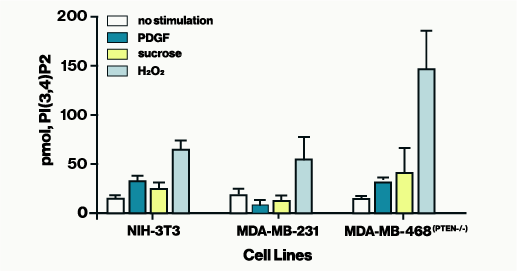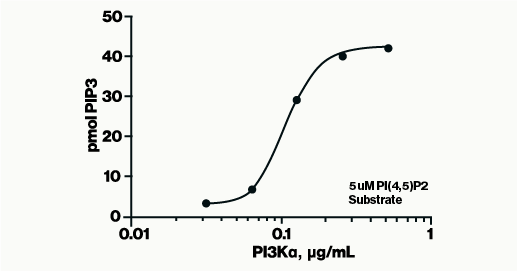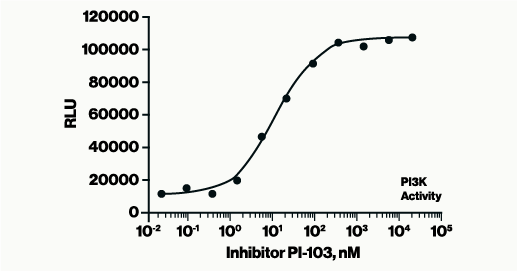The PI(3,4)P2 Mass ELISA measures the amount of PI(3,4)P2 extracted from cells by means of a competitive ELISA (96 well format).
Assay Range: 300 to 1.23 pmol PI(3,4)P2
Sample Type: Dried down lipid extracted from cells
Sample Volume: 120 µL/sample, run in duplicate.
The PI(3,4)P2 Mass ELISA is a competitive ELISA where the signal is inversely proportional to the amount of PI(3,4)P2 produced. This allows the user to measure the amount of PI(3,4)P2 extracted from cells by means of standard 96 well ELISA format. Eliminating the need for radioactivity and thin layer chromatography.
Once PI(3,4)P2 has been extracted from cellular samples, it is incubated with a PI(3,4)P2 detector, then added to the PI(3,4)P2-coated plate for competitive binding. A peroxidase-linked secondary detection reagent and colorimetric substrate is used to detect PI(3,4)P2 detector binding to the plate. The colorimetric signal is inversely proportional to the amount of PI(3,4)P2 extracted from cells.
Keywords: PI(3,4)P2, PI34P2, PtdIns(3,4)P2




